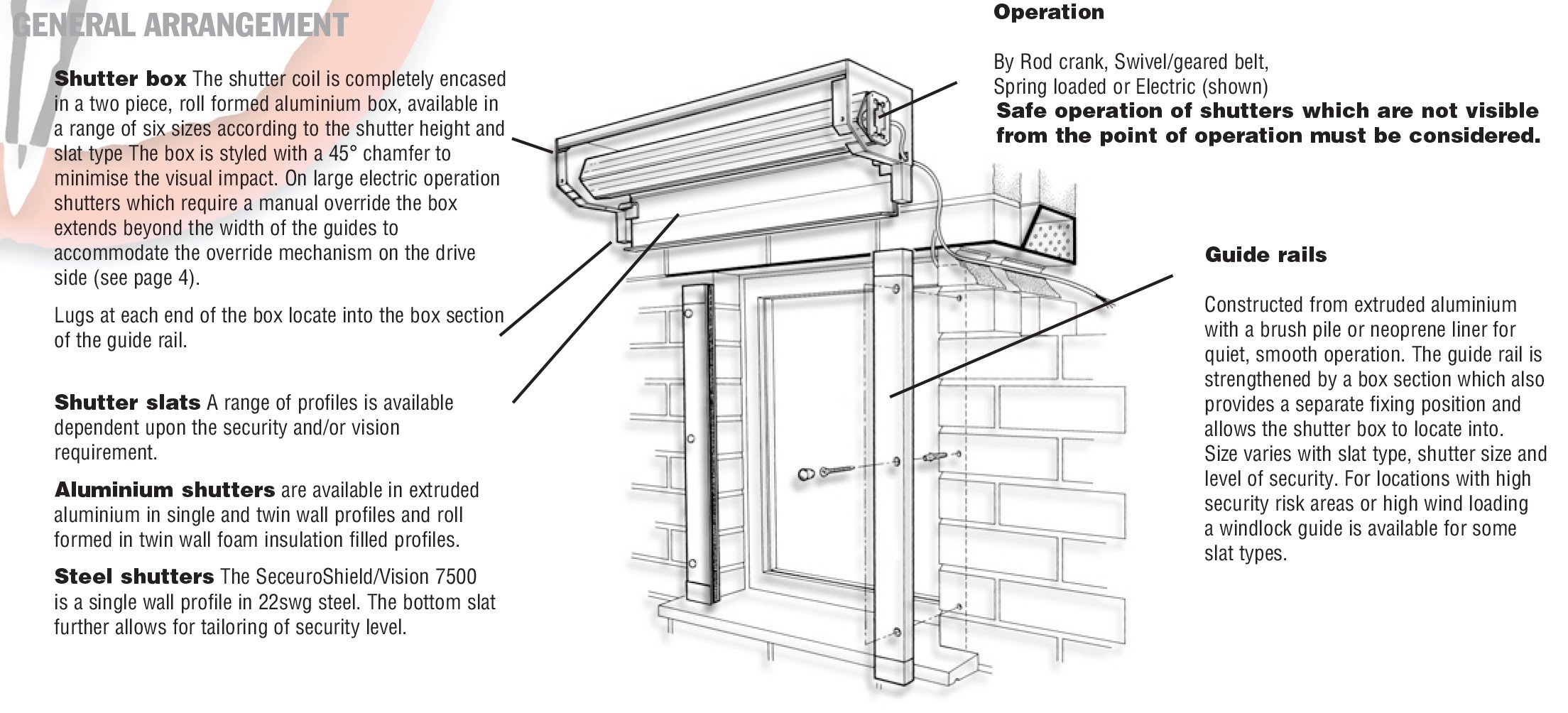Welcome to our comprehensive guide on Roller Shutter Terminology. Whether you're a homeowner, a business owner, or just curious about roller shutters, this guide will help you understand the key terms associated with these versatile and protective installations.

Explanation: A roller shutter is a type of door or window shutter consisting of many horizontal slats (or sometimes bars or web systems) hinged together. They provide protection against wind and rain and are commonly used for security purposes.
Pros: Enhances security, provides weather resistance, and offers privacy.
Cons: Can be costly to install and requires maintenance.
Explanation: Slats are the horizontal pieces that make up the shutter curtain. They can be made of aluminum, steel, or PVC.
Pros: Variety of materials to suit different needs; customisable.
Cons: Some materials may be less durable or more expensive.
Explanation: The curtain refers to the collective assembly of slats that form the roller shutter.
Pros: Provides the main protective barrier.
Cons: Damage to the curtain can affect the entire shutter's functionality.
Explanation: Guide rails are vertical tracks on either side of the window or door where the shutter moves up and down.
Pros: Ensures smooth operation and adds to shutter stability.
Cons: May require regular cleaning to prevent jamming.
Explanation: This is the enclosure at the top where the shutter rolls up when open.
Pros: Protects the mechanism and offers a cleaner look.
Cons: Can take up space and may require additional installation work.
Explanation: Manual shutters are operated by hand, while electric shutters are motorised and often come with a switch or remote control.
Pros of Manual: Less expensive, no power needed.
Cons of Manual: Requires physical effort.
Pros of Electric: Easy to use, convenient.
Cons of Electric: More expensive, requires power.
Explanation: This refers to the level of security provided by the shutter, often determined by material strength and design. We have a range of Security Rated roller shutters, which have been independently attach tested.
Pros: High-rated shutters offer better protection.
Cons: Higher security often comes with higher cost.
Explanation: Some shutters provide insulation against heat, cold, and noise.
Pros: Energy saving, increased comfort.
Cons: Insulated models may be more expensive.
Explanation: Indicates the shutter's resistance to fire.
Pros: Essential for safety in certain environments.
Cons: Fire-rated shutters can be more expensive.
Explanation: Options to tailor the shutter's appearance, such as color and finish.
Pros: Aesthetic appeal, matching with building design.
Cons: Customisation can add to the cost.
This guide has been designed to be both informative and easy to navigate, ensuring a better understanding of roller shutters for our readers. If you have any questions or need further assistance, feel free to contact us!